If the reputation of Palm Springs as a bastion of Modern architecture can be blamed on anyone, it must be Albert Frey. That much is clear from a comprehensive exhibition—tagged with the subtitle Inventive Modernist and curated by designer Brad Dunning—of Frey’s oeuvre now at the Palm Springs Art Museum’s architecture and design gallery through June 3. To accompany the show, on March 23, the museum unveiled the permanent installation of Frey’s Aluminaire House (1930–31) in a desert garden plot south of its main building.

Albert Frey, photographed in front of the Frey House I. Photo © Julius Shulman/ J. Paul Getty Trust. Getty Research Institute, Los Angeles (2004.R.10).
The story of how a house designed for the 1931 Architecture and Allied Arts Exposition in New York made its way from Manhattan to Long Island to Palm Springs is almost as interesting as Frey’s somewhat Forrest Gump–style journey through Modern architecture from Europe to California. For anyone unfamiliar with the Swiss-born Frey, who died in 1998, the exhibition places him at the table with Le Corbusier in 1928, executing design details for sliding glass doors and a bathroom lounge for the Villa Savoye—arguably one of the ultimate Modernist houses. With the cachet of working for Corb, Frey moved to New York in 1930 and joined the office of A. Lawrence Kocher, an architect who also happened to be the managing editor of RECORD. It was under Kocher that Frey designed the Aluminaire.
After relocating to Palm Springs in 1934 to oversee construction of a project for Kocher, Frey managed to be lured back to New York in 1938 to contribute to the design of the Museum of Modern Art with Philip Goodwin and Edward Durell Stone. The oculi along MoMA’s roof terrace, which Frey designed, are the progenitors of Frey’s later experiments with circles in his own architecture back in Palm Springs, such as the entrance to the City Hall (1957) or the whimsical porthole windows on the North Shore Yacht Club (1958), restored and accessible south of the city along the Salton Sea.
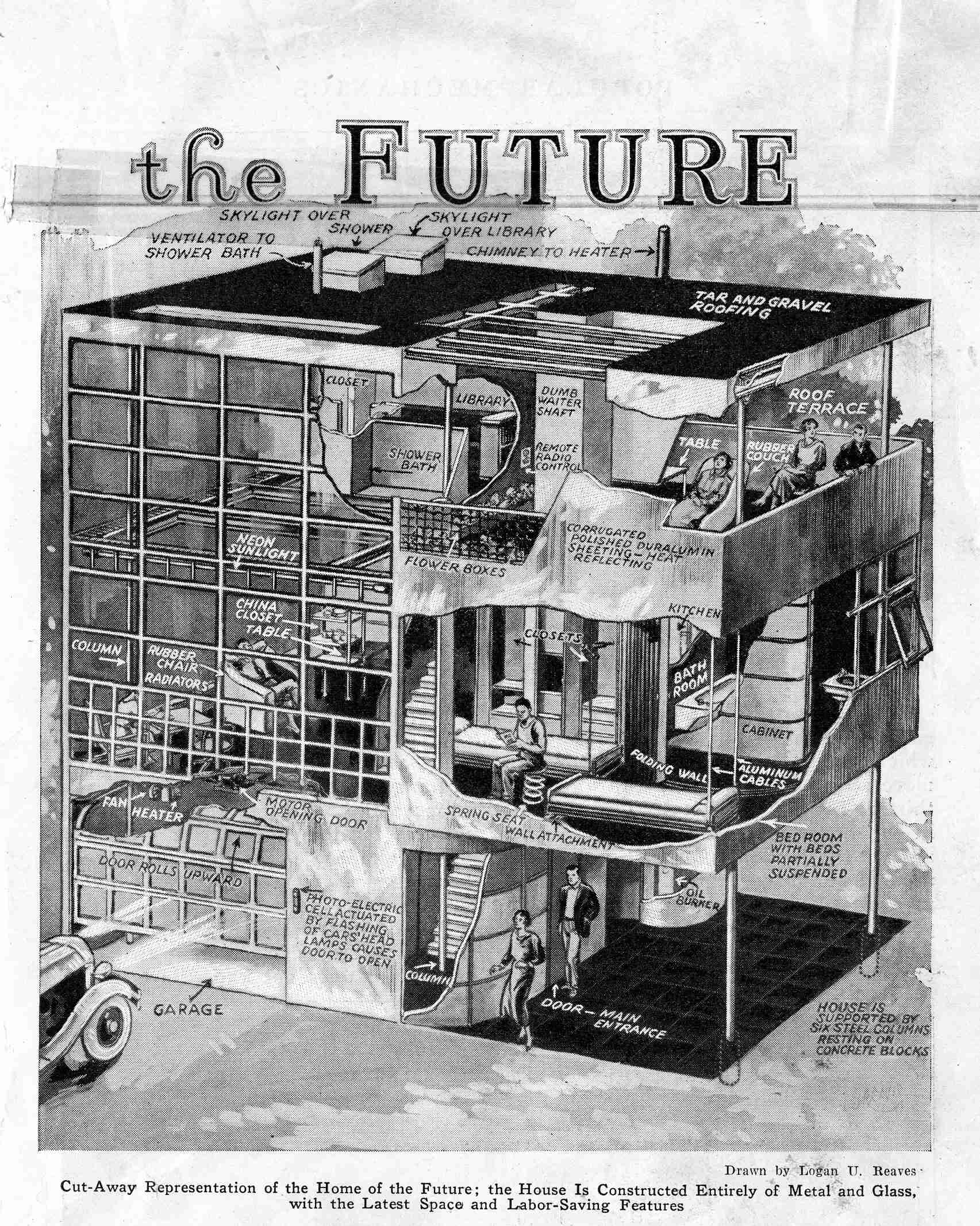
The Aluminaire House was hailed as the house of the future by Popular Mechanics, which illustrated it with a cutaway section. Image Collection of Palm Springs Art Museum, Albert Frey Collection 55-1999.2
The Aluminaire House was among the few American projects included in the 1932 Modern Architecture: International Exhibition, curated by Henry-Russell Hitchcock and Philip Johnson at MoMA. (The only other American house included in the book from the exhibition was Richard Neutra’s Lovell House from 1929, now only two hours west of the Aluminaire in Los Angeles.) The exhibition neatly lays out Frey’s luminous history, punctuated with the publicity he generated over the years as Palm Springs’ most noteworthy early Modernist. Frey relied on Kocher and his editorial influence to realize the Aluminaire—for example, the Aluminum Company of America (ALCOA) donated materials to build the house for the one-week-long exposition in 1931. Such design-industry partnerships informed many demonstration projects in the 20th century—one being the all-plastic Monsanto House of the Future, installed at Disneyland in 1957—but Frey had a long love affair with aluminum. Frey’s first Palm Springs house for himself, which he began in 1940 and where he started using corrugated aluminum siding, was featured in a 1956 publication, “Aluminum in Modern Architecture,” part of a series of case studies and design guidelines produced by the Reynolds Metals Company to promote aluminum use in buildings. He’s arguably the godfather of aluminum in architecture.
After the 1931 exposition, the Aluminaire House was purchased by architect Wallace Harrison, who installed it as a guesthouse on his Long Island estate in Huntington, New York. In 1987, with the building facing demolition by a new owner, two New York architects—Michael Schwarting and Frances Campani—rallied to save it and, working with students, installed it in 1994 on the campus of the New York Institute of Technology in Central Islip. With the looming closure of that campus in 2004, the house again faced uncertainty. Schwarting and Campani created a nonprofit foundation, bought it for 10 dollars, and tried to land the house on another New York site. After that fell through, they were approached by Palm Springs advocates and its museum, where it physically joined the collection in 2017. Preservation of Modernism remains an urgent issue in the Palm Springs area; after he sold it, Frey’s 1940 house was unceremoniously demolished in 1962, a major loss to architectural history. Frey’s second house, built in 1964, is now owned by the museum.
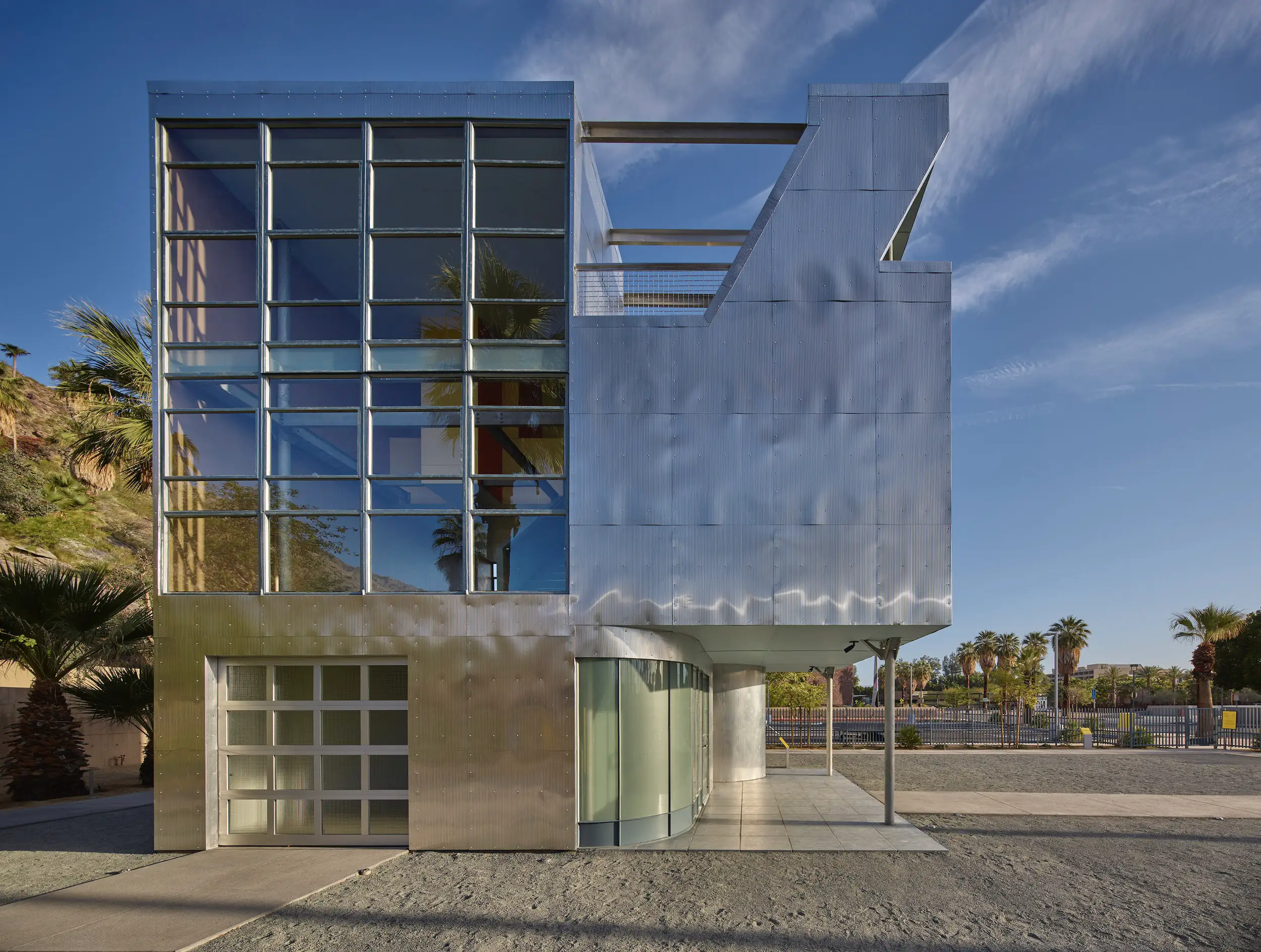
Though new, the aluminum panels feature dimples like the originals. Photo © Fotoworks/Benny Chan, courtesy Palm Springs Art Museum
The Aluminaire has been taken apart and put back together at least four times (Harrison moved it once, intact, but felt obliged to make many modifications to Frey’s original design). “None of it is welded. It’s all bolted,” says Campani. “The rudimentary Frey plans are actually quite accurate, but they are very simple. A lot of Frey details exist about how the sills work and the furniture gets built.”
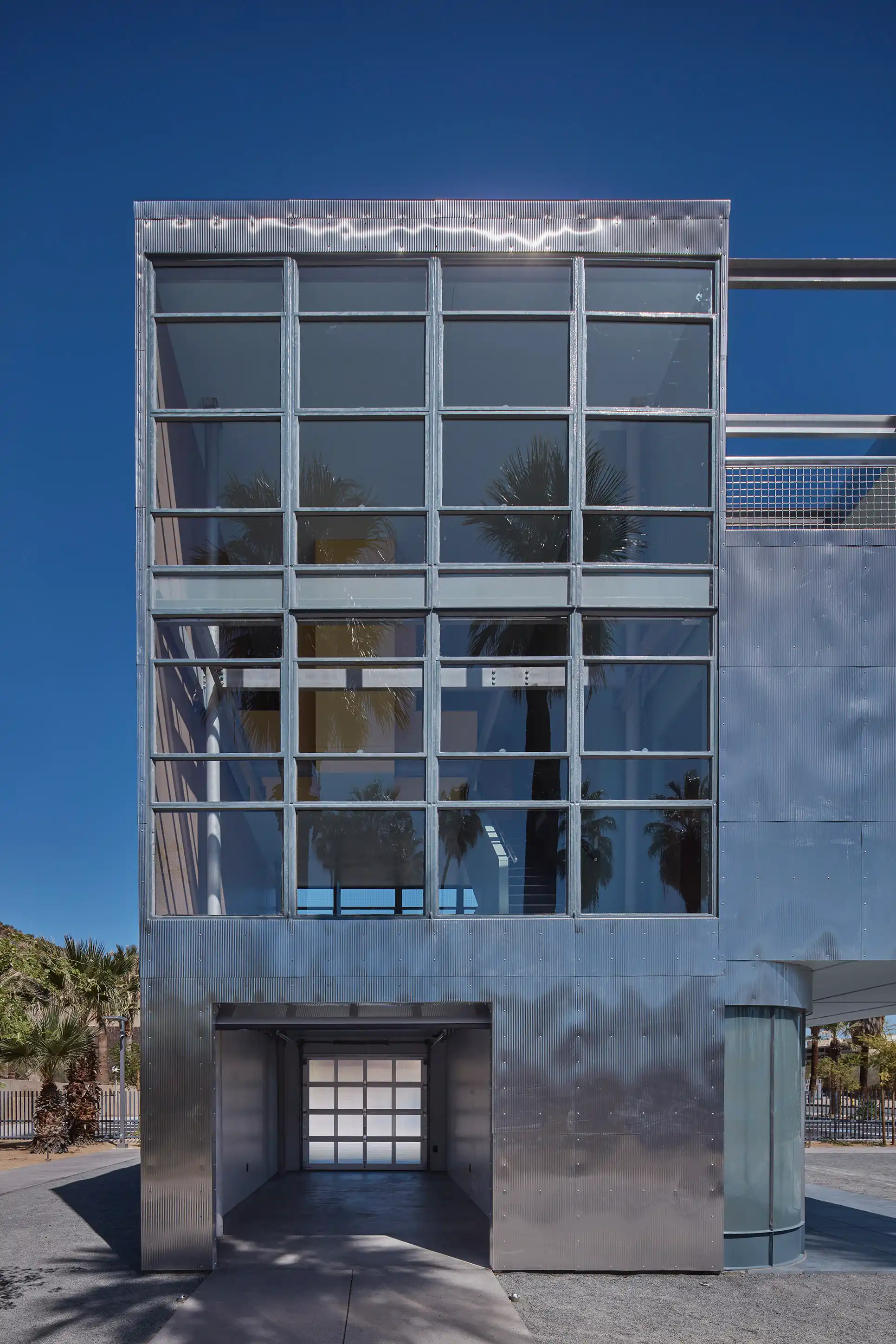
View into the drive-throug garage and entrance hall. Photo © Fotoworks/Benny Chan, courtesy Palm Springs Art Museum
Campani and Schwarting put together a full set of construction documents for the house as they took it apart in 1987. The ground floor features a drive-through garage and entrance hall, where the house’s boiler was prominently installed as a piece of technological art. An open stair leads to the second floor, which includes the double-height living and dining rooms, kitchen, and bedroom and bathroom. The third floor has a library, with a bathroom that protrudes as an object into the living room volume (Campani says that, among the house’s critics over the years, Reyner Banham especially deplored the third-floor bathroom’s prominence).
The Aluminaire is many things, but it may be the first “circular economy” house designed for disassembly that has actually demonstrated the principle. Many of the materials are original, such as the steel windows, while others, such as the garage doors, have been remade by the original suppliers. The interior featured an innovative fabric, Fabrikoid, manufactured by Dupont as an artificial leather and, according to Schwarting and Campani, used by Frey to avoid painting and make cleaning easy. Elsewhere, unfinished plywood wall panels add structural rigidity and lend the house a contemporary resonance.
Although visitors cannot access the house’s interior, they can glimpse the influence of Le Corbusier in the six exposed aluminum structural columns and 3-inch-thick aluminum-clad curtain wall. Paul Goldberger, in the essential and jam-packed catalogue for the modern-day exhibition, calls Frey “Corbusier’s first American acolyte,” and reminds us of the Aluminaire’s design debt to Corbusier’s 1927 Maison Citröhan in Stuttgart (a bit more substantial a dwelling, but the structural diagram and thin facade are unmistakable precursors).
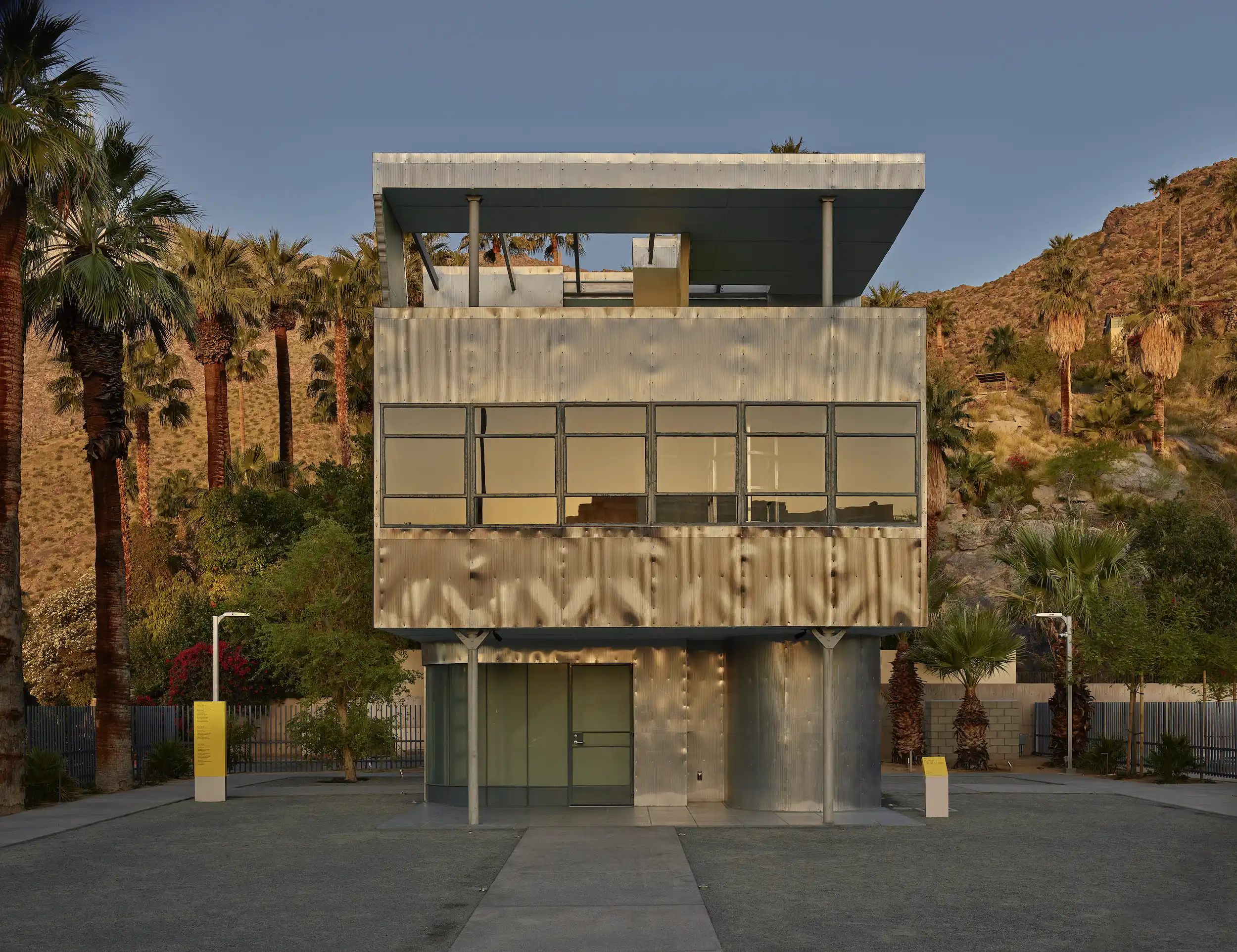
Photo © Fotoworks/Benny Chan, courtesy Palm Springs Art Museum
Both Corb and Frey were focused on the same project: an affordable house, easy to mass-produce, that adapted emerging technologies to quicken the slow pace of traditional housing construction (Frey wrote many articles on this topic with Kocher for RECORD). The Aluminaire’s shiny, unanodized aluminum panels are new but true to the original—even the dimpling in the panels adheres to the original, a fabrication outcome that Frey avoided in later buildings, where he switched to heavier gauge, corrugated aluminum siding.
Unfinished metal cladding reemerges in California architecture now and then for similar aims, as in Frank Gehry’s 1968 Davis Studio and Residence in Malibu, where he used galvanized corrugated steel, or Pierre Koenig’s metal-wrapped 1994 Schwartz House in Santa Monica. This kind of architectural experimentation, which colored Frey’s long career, is rare these days in Palm Springs, where “midcentury” has mostly become a style choice expressed in EIFS and unfortunate pops of color. These are crass and misguided interpretations of Frey’s Modernist imperatives, which remain as fresh as they were in 1931.


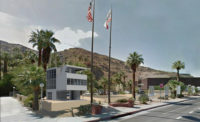
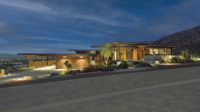
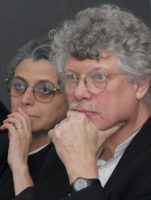
Post a comment to this article
Report Abusive Comment